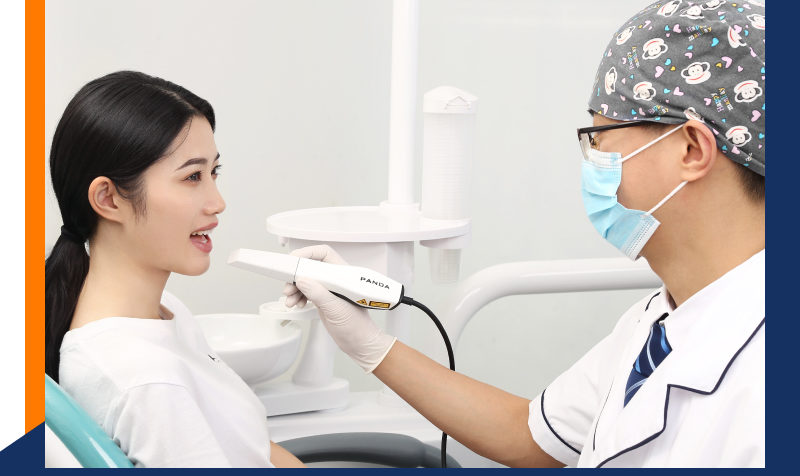As digitization expands its footprint into the world of dentistry, it is changing the diagnosis and treatment approaches that were used earlier. For instance, dentists, nowadays, do not wait for the x-ray images of the teeth and gums to be taken but proceed with administering the required treatment with the help of real-time images obtained by a 3D dental scanner. Moreover, as digital scanners are easy to use, dentists are finding it worthwhile to invest in these devices and incorporate them into their workflow. Thus, from revolutionizing simple dental treatments to cosmetic dentistry such as fixing prostheses and creating perfect invisible aligners and obturators, devices like an intraoral scanner has shaped dentistry like never before.
To understand it properly, let’s explore the answers to some commonly asked questions like:
How does a 3D dental scanner function?
A 3D dental scanner obtains digital impressions of the patient’s teeth and gum area and transfer them to a computer. Thereafter, the software processes these impressions and displays them on the computer screen for the dentist to see them in real time. The intraoral camera embedded in the device is moved by the dentist in any direction that is needed for diagnosis. In doing so, the light source in the form of laser captures the scanned area’s image and creates a 3D model. There are generally two types of systems – one that uses photographic technology and another that uses video technology.
How has digital dentistry changed treatment?
In the conventional method still followed by many dentists, the impression of the patient’s teeth and gums are obtained with the help of materials such as alginate and silicones. This technique added to the patients’ discomfort and subjected them to the risk of gagging. Thus, the traditional method is not only time-consuming but is inconvenient to the patients in more than one way. On the other hand, with the advent of digital dentistry, such problems have been successfully eliminated. This is due to the fact that intraoral scanners help dentists to design prosthetics without any invasive treatments. Moreover, these scanners have helped dentists by shortening the time of treatment and making the process, smooth and seamless. Thus, you can see how a 3D dental scanner has revolutionized dental treatment.

Advantages of digital dentistry and the use of intraoral scanners
Let’s check out how digital dentistry has benefited both the patients and doctors:
- Dentists are able to create a 3D model of the teeth and gum areas with the help of scanners in real time thereby reducing the treatment time
- The usage of an intraoral scanner has minimized the discomfort of patients, as they don’t have to endure the unpleasant taste of alginate and silicon materials and the risk of gagging
- The fidelity and precision of 3D models are way better than what traditional wax-up models can achieve
- In case the device generates distorted images for some reason, the dentist can obtain the images again by rescanning, which can be done in a matter of few minutes
- Under traditional dentistry, the plaster casts of the teeth models need to be stored physically. While in the digital medium, no such thing is required and every record is stored digitally
- With the help of digital scanning, the images can be transmitted to the laboratory virtually
- The acceptance of treatment by the patients increases since they can visualize the whole process on the monitor and understand the dental ailment
Conclusion
A 3D dental scanner has aided dental treatment to evolve in terms of quality, time consumption, convenience, and comfort level. Thus, it is easy to understand why an intraoral scanner is becoming more popular not only among the dentists but also among patients and other stakeholders.






